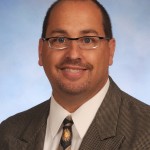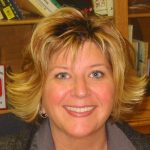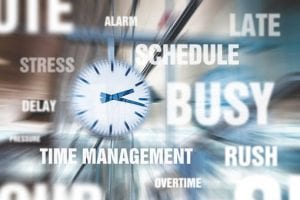Ohio State University Extension is made up of several different disciplines, but they can all be intertwined into one program if we put our heads together. One example of this is a program which was developed in Adams, Brown, and Highland Counties a few years ago, called Ag Reality. Becky Cropper and Nikki Eyre were the 4-H educators, and David Dugan and John Grimes were the Agriculture and Natural Resources educators at that time in the respective counties. Becky Cropper was also the CD educator in Brown.
 This group of educators worked with the Farm Service Agency and local high school agriculture teachers to develop a spinoff of the 4-H program Reality Check, now known as Real Money Real World. The program began with three high school agriculture programs, utilizing the juniors in the program. Each school had between 10 and 20 students that were our first students in the program.
This group of educators worked with the Farm Service Agency and local high school agriculture teachers to develop a spinoff of the 4-H program Reality Check, now known as Real Money Real World. The program began with three high school agriculture programs, utilizing the juniors in the program. Each school had between 10 and 20 students that were our first students in the program.
Frankie Stith Scott and Rita Polley work with youth and adults for agricultural loans through the USDA Farm Service Agency. Frankie and Rita worked with the schools and set up a two-day training for the students. The students were trained on using budgets, farm account records, and other basics for record keeping on a farm. This training was conducted within a week prior to the full program.
 The full program was conducted at a central location in which students from all three schools attended. The full program simulation was basically farming for a day. The students were presented with a family situation, like married with no children or married with two children, and a family living expense was attached. They were also given a budget based on their grade point average to go along with the 300 acre farm on which to conduct business. There were seven different farms to operate given out randomly. Some were all tillable; some were partially tillable and partially wood lots. Some farms had one house, some had two, and one farm had no house. Once they had all of this to ponder, we turned them loose to farm and live.
The full program was conducted at a central location in which students from all three schools attended. The full program simulation was basically farming for a day. The students were presented with a family situation, like married with no children or married with two children, and a family living expense was attached. They were also given a budget based on their grade point average to go along with the 300 acre farm on which to conduct business. There were seven different farms to operate given out randomly. Some were all tillable; some were partially tillable and partially wood lots. Some farms had one house, some had two, and one farm had no house. Once they had all of this to ponder, we turned them loose to farm and live.
This is where the community came in. Several business people including: insurance for crop and property, bankers, grain buyers, farm stores, cattle buyers, fertilizer and seed sales, and more. The students conducted business with these community businesses throughout the day.
The learning and strategy was amazing. The students did a great job of interacting with the businesses. The business people were impressed with the drive to excel that they saw from some students. Some later commented that they actually did business with some of the students in the weeks following the program. The students worked together in some instances, renting houses out to those that did not own a home. They bought equipment together in some cases.
We also had an auction of farm equipment. The list of items to be sold were given to the students prior to the program. A PowerPoint presentation rolled through the list of items to be auctioned during the morning. An auctioneer came in just before lunch, and we conducted an auction of the items on the list. The auctioneer explained how an auction works, and we discussed each item once it sold.
Of course a real Reality would not seem real if there were not taxes to be paid. The county Auditor was present to collect taxes during the day. We also had a logger there trying to buy all of the timber as cheap as possible.
At the end of the day we pulled a year from our history. We used the data from the National Ag Statistics Service to calculate yields and prices on crops. We then explained crop insurance, contracting grain, the value of getting bids on your timber, and much more.
This program started nearly 15 years ago. We now do a separate program in each of the three counties, and each high school in the three counties participates. Many of the same business people continue to assist with the program. We typically do the programs between November and March. If you would like to know more about the program, contact David Dugan at dugan.46@osu.edu or call 937-544-2339.
 David Dugan, educator, ANR/CD, OSU Extension-Adams County.
David Dugan, educator, ANR/CD, OSU Extension-Adams County.



 This year marked my eighteenth year with OSU Extension and 28
This year marked my eighteenth year with OSU Extension and 28
 One of the trickiest situations for a facilitator can be encountering and effectively handling disagreements among group participants. Making decisions in groups is difficult and often messy, but helping a group make complex decisions is one of the most important tasks of a facilitator. The lively discussion that is part of the group decision making process, however, often involves people who feel passionately about their ideas, and sometimes that passion can escalate to a discourse that is unhelpful at best, and can often be damaging to the group or individuals involved.
One of the trickiest situations for a facilitator can be encountering and effectively handling disagreements among group participants. Making decisions in groups is difficult and often messy, but helping a group make complex decisions is one of the most important tasks of a facilitator. The lively discussion that is part of the group decision making process, however, often involves people who feel passionately about their ideas, and sometimes that passion can escalate to a discourse that is unhelpful at best, and can often be damaging to the group or individuals involved. slow down the discussion by encouraging individuals to paraphrase what they are hearing each other say and allowing only one person to speak at a time.
slow down the discussion by encouraging individuals to paraphrase what they are hearing each other say and allowing only one person to speak at a time.


 This group of educators worked with the Farm Service Agency and local high school agriculture teachers to develop a spinoff of the 4-H program Reality Check, now known as Real Money Real World. The program began with three high school agriculture programs, utilizing the juniors in the program. Each school had between 10 and 20 students that were our first students in the program.
This group of educators worked with the Farm Service Agency and local high school agriculture teachers to develop a spinoff of the 4-H program Reality Check, now known as Real Money Real World. The program began with three high school agriculture programs, utilizing the juniors in the program. Each school had between 10 and 20 students that were our first students in the program. The full program was conducted at a central location in which students from all three schools attended. The full program simulation was basically farming for a day. The students were presented with a family situation, like married with no children or married with two children, and a family living expense was attached. They were also given a budget based on their grade point average to go along with the 300 acre farm on which to conduct business. There were seven different farms to operate given out randomly. Some were all tillable; some were partially tillable and partially wood lots. Some farms had one house, some had two, and one farm had no house. Once they had all of this to ponder, we turned them loose to farm and live.
The full program was conducted at a central location in which students from all three schools attended. The full program simulation was basically farming for a day. The students were presented with a family situation, like married with no children or married with two children, and a family living expense was attached. They were also given a budget based on their grade point average to go along with the 300 acre farm on which to conduct business. There were seven different farms to operate given out randomly. Some were all tillable; some were partially tillable and partially wood lots. Some farms had one house, some had two, and one farm had no house. Once they had all of this to ponder, we turned them loose to farm and live.
 I caught this article on the Forbes website a while back. It presented pertinent reminders for both work and home life. These are seven quotes from Stephen Covey that “have the power to completely change the direction of one’s life.” These are some of the basics that can help us through anything. I hope they will be helpful to you.
I caught this article on the Forbes website a while back. It presented pertinent reminders for both work and home life. These are seven quotes from Stephen Covey that “have the power to completely change the direction of one’s life.” These are some of the basics that can help us through anything. I hope they will be helpful to you.
 Oh no, there’s that email again reminding me that my blog is due! When will I find the time to write about what I do? Yes, I hear all of the many organized people out there thinking, “Here is a great candidate for Time Management training.” Been there-done that and actually did pick up some good pointers to help keep the many demands of life activities well organized. A few of these timely time saving tips follow:
Oh no, there’s that email again reminding me that my blog is due! When will I find the time to write about what I do? Yes, I hear all of the many organized people out there thinking, “Here is a great candidate for Time Management training.” Been there-done that and actually did pick up some good pointers to help keep the many demands of life activities well organized. A few of these timely time saving tips follow:




